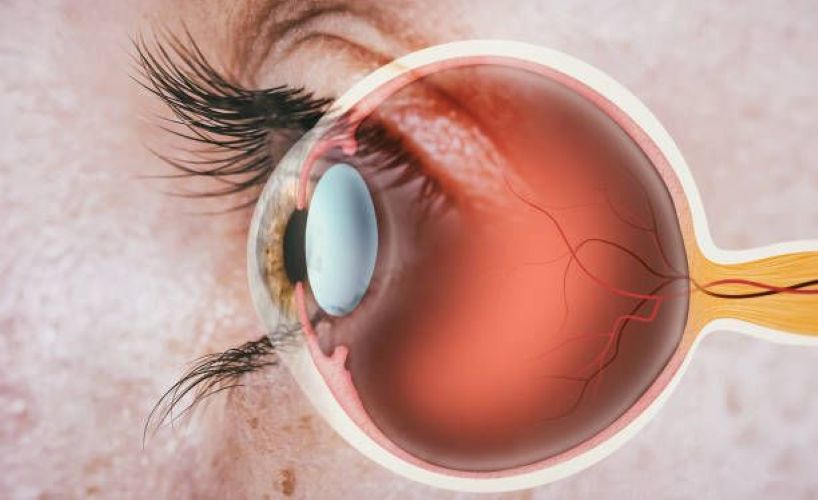What Is Mild Myopia?

When you have myopia, light focuses in front of the retina, causing distant vision to blur
Myopia (nearsightedness) is one of the most common refractive errors, occurring when light focuses in front of the retina instead of directly on it. This causes people to see nearby objects clearly but distant ones appear blurry. Those with myopia often struggle to read the board, drive, or recognize objects from afar.
When symptoms such as blurry distance vision, frequent squinting, or eye strain appear, it is important to have an eye examination and an accurate prescription to correct your vision.
Generally, individuals with a nearsightedness level of less than -3.00 diopters are considered to have mild myopia. Within this group, -1.00 diopter is the mildest form. Although the decrease in distance vision is minimal, it can still interfere with daily activities if not corrected properly.
If you ignore it and do not wear glasses, your eyes must overwork to focus, which can eventually lead to worsening myopia, amblyopia (lazy eye), or even strabismus (eye misalignment).
Symptoms of 1-Degree Myopia
Although -1.00 diopter nearsightedness is considered mild, patients may still experience several symptoms such as:
- Blurry distance vision, especially at night or in dim light.
- Squinting to see distant objects more clearly.
- Frequent eye strain, especially when using digital devices or studying for long periods.
- Watery eyes, dryness, or a feeling of heaviness around the eyes.
While these symptoms may seem minor, if left untreated, they can cause faster vision deterioration — especially among students or people who spend long hours studying or working with screens.
Should You Wear Glasses for 1-Degree Myopia?

Is it necessary to wear glasses for 1-degree myopia? A small question that can make a big difference to your future vision!
The answer is yes — you should wear glasses when you need to see clearly at a distance.
Even at -1.00 diopter, vision is already reduced compared to normal eyesight, especially when driving, studying, or watching TV. Wearing glasses helps:
- Reduce eye strain: Your eyes no longer need to over-focus to see clearly, preventing fatigue and headaches.
- Slow myopia progression: Without proper correction, your eyes must constantly adjust, which can make nearsightedness worsen faster.
- Improve night vision: Even mild myopia can make it harder to see clearly in low light, increasing the risk of accidents while driving or walking at night.
However, you don’t need to wear glasses all day long. You should wear them only when:
- Working, studying, or driving.
- Looking at distant objects (e.g., reading a board, watching a movie, attending meetings).
- You feel eye strain, headaches, or blurred vision without glasses.
Overdependence on glasses can reduce your eye’s natural focusing ability. Therefore, people with mild myopia should balance wearing glasses and giving their eyes time to rest appropriately.
Tips for Choosing Glasses for 1-Degree Myopia
To protect your vision effectively, people with mild myopia should keep the following in mind when choosing glasses:
- Get a professional eye exam: Do not buy ready-made glasses, as each person’s nearsightedness level and astigmatism are different.
- Select the right lenses: High-index, lightweight lenses with UV protection offer better durability and comfort.
- Pick comfortable frames: Well-fitted frames stabilize your vision and reduce pressure on the nose bridge.
- Use blue-light filtering lenses: Especially useful for those who study or work long hours on computers to prevent eye strain and dryness.
Once you start wearing glasses, it’s best to schedule regular eye exams every 6–12 months to monitor changes in your prescription, especially for younger individuals whose myopia may progress faster.
Tips to Prevent Myopia Progression

Letting your eyes rest not only helps them see better but also reduces strain and prevents progression of myopia.
In addition to wearing glasses properly, maintaining healthy eye habits is essential to prevent your myopia from worsening:
- Keep a proper distance when reading, writing, or using digital devices (at least 30–40 cm).
- Follow the 20–20–20 rule: every 20 minutes of screen time, look at something 20 feet (~6 meters) away for 20 seconds.
- Eat foods rich in vitamin A, C, E, zinc, and omega-3 — such as carrots, salmon, pumpkin, and dark leafy greens.
- Increase exposure to natural light and avoid studying in dim environments.
- Have regular eye checkups, especially if you notice rapid vision changes or persistent eye fatigue.
Modern and Effective Correction Options
For people with mild myopia, eyeglasses or soft contact lenses remain the most common options. However, if you wish to achieve natural, glasses-free vision, you may consider Phakic ICL (Phakic ICL) surgery — an advanced lens implantation technology that improves vision without damaging the cornea.
Phakic ICL is particularly suitable for those who:
- Have myopia of -3.00 diopters or higher, thin corneas, dry eyes, or are not good candidates for LASIK.
- Desire high-quality vision, even at night.
- Seek a stable, long-term solution that preserves the natural structure of the eye.
This technology has been approved by the U.S. FDA and has achieved over 99% patient satisfaction, helping nearsighted individuals regain clear, comfortable vision without relying on glasses.
In summary, if you have 1-degree myopia, you should wear glasses when looking at distant objects — especially during studying, working, or driving. While mild myopia may not drastically affect your daily life, neglecting to correct it can accelerate progression and harm your long-term eye health.
Be proactive by getting regular eye exams, wearing the correct prescription, and following healthy vision habits to keep your eyes strong for years to come.
If you want to learn more about advanced myopia correction methods such as Phakic ICL, visit TD Eye – Ophthalmology Knowledge Center for professional advice and guidance.

 vi
vi 05-Nov-2025
05-Nov-2025











 0916.741.763
0916.741.763 Appointment
Appointment